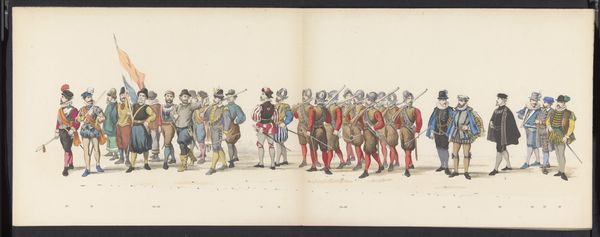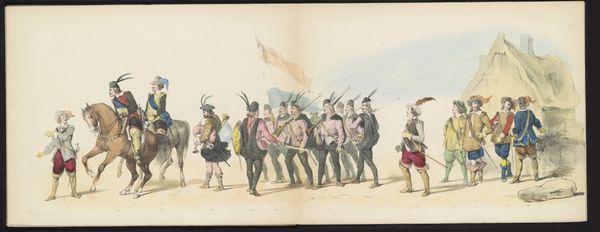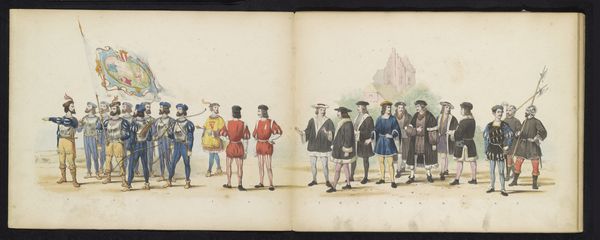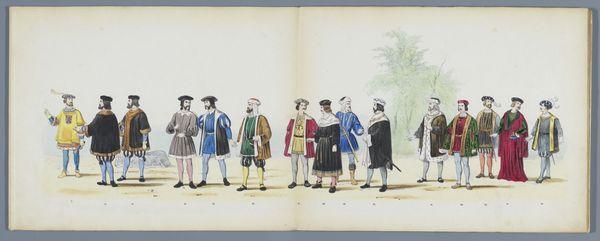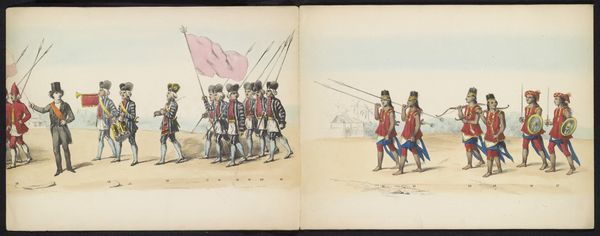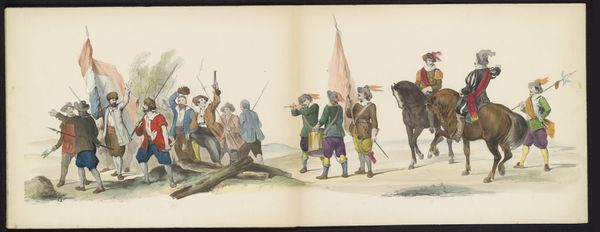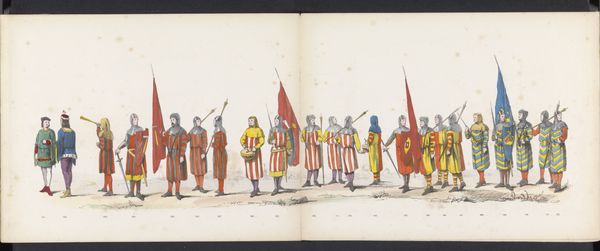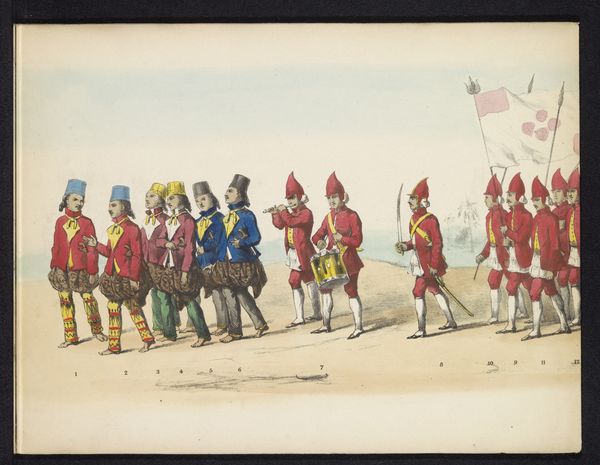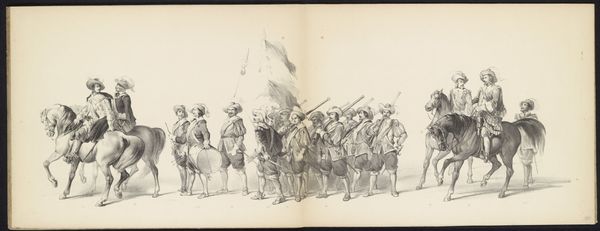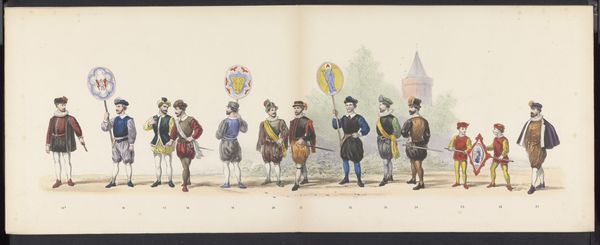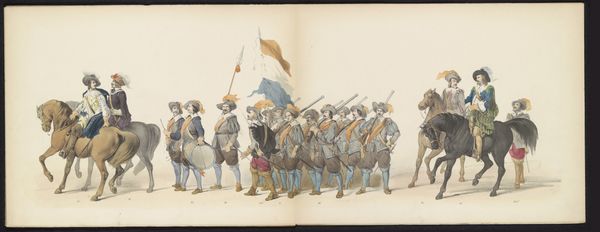
drawing, watercolor, pen
#
drawing
#
watercolor
#
coloured pencil
#
pen
#
genre-painting
#
academic-art
#
watercolor
Dimensions: height 280 mm, width 730 mm
Copyright: Rijks Museum: Open Domain
Curator: Today we’re looking at “Maskerade van de Leidse studenten, 1855 (plaat 3)” or “Masquerade of the Leiden Students, 1855 (plate 3),” by Gerardus Johannes Bos, currently housed at the Rijksmuseum. Editor: My immediate reaction is one of curiosity. It's colorful, but in a subdued way. Almost like looking at historical costumes carefully preserved, yet also presented in a way that feels very staged, almost like theater. Curator: It’s fascinating how it captures the performative nature of student traditions through a 19th-century lens. We can dissect this "masquerade" as both spectacle and social commentary, reflecting on the power structures at play within the academic environment of the time. These students clearly are putting on a show that simultaneously reinforces and perhaps questions certain hierarchies. Editor: Precisely! The artist seems intent on capturing the various layers of attire –the fabrics, colors, the weight they would carry. Look closely, one sees a definite attention to detailing their arms; holding instruments and weaponry alike, each prop suggests a sense of social role assigned. Curator: Absolutely, and beyond the sartorial choices, we must also consider the racial and gender dynamics possibly embedded in the context of Leiden's student body in the 1850s. Who was included in this performance, and more importantly, who was excluded? What narratives were being perpetuated, and what narratives were being silenced through this public display? The colored pencil, pen, and watercolor rendering may soften the reality. Editor: Indeed, these drawing and watercolor contribute significantly. There is almost delicate intention. But consider the materiality of it. Watercolor lends a kind of "fragility", right? And here it covers a masquerade where young men wield weapon. There is a sense that such display might eventually collapse on itself... Curator: Your interpretation highlights an important tension, the performative instability beneath the spectacle. Looking at historical art is not merely about viewing the surface representation, but actively questioning the underlying historical and social contexts from an intersectional perspective. It allows us to unearth unspoken dynamics within that are still resonating now. Editor: Precisely; observing this masquerade via colors and tangible material of the piece allows us question if these grand shows of material and arms always tell the full story... In fact what do they hide?
Comments
No comments
Be the first to comment and join the conversation on the ultimate creative platform.
